The Beginner’s Guide: Sofia Coppola, Director

Siobhan is a teacher and writer living in Wales, UK.…
It seems strange that a body of work which has largely focused on the female experience without pontificating, should prove to be so contentious. And yet, Sofia Coppola’s viewers seem to fall largely within two extremes: the devoted and the apathetic.
Detractors voice their belief that her films lack pace or urgency. This, coupled with her decision to frequently focus on characters whose privilege brings them little happiness or fulfilment, is seen as utterly superficial. Critics seem to largely voice the opinion that these characters, whose ennui form each film’s central conceit, are somehow less worthy of empathy than a character who undergoes trauma.
Similarly, Coppola’s heralded lineage has frequently generated accusations of nepotism. Her early acting efforts with her father attracted vitriol. Foregoing the acting, a career which she has stated was never her true intention, Coppola turned to directing and writing.
The acclaim awarded her second feature, Lost in Translation, making her the third female director to be nominated at the Oscars, should have stifled any further cries of partiality, and yet Coppola has still found her talent and ability questioned. Awarded the Golden Lion at the 67th Venice International Film Festival for Somewhere, opponents cited her previous relationship with Tarantino as a reasoning for her win.
Such discourse entirely misreads both Sofia Coppola as a director, and her impressive body of work. Her ability to create tone, and mood is striking. Her dialogue in its sparseness, enables performers to utilise non-verbal gestures and in turn, inhabit their characters.
Her choice of soundtracks, which have generated discussion regarding its suitability, are rather wonderful, enhancing the viewer’s understanding of narrative and character development. Her aesthetic choices, creating sublime images, often draw upon her experience as a photographer and music video director.
Coppola regularly returns to the same theme: the desire for control. Whilst some may deride her decision to largely focus on women, with only Somewhere and A Very Murray Christmas featuring male leads, her characters all feel a similar desire to regain control over their lives.
Coppola’s films depict character isolation and alienation. Her character’s, often from exclusively privileged backgrounds, struggle with what direction to take purely because there is so much choice for them. This does not make their inclusion or focus any less worthy.
Lick the Star (1998)
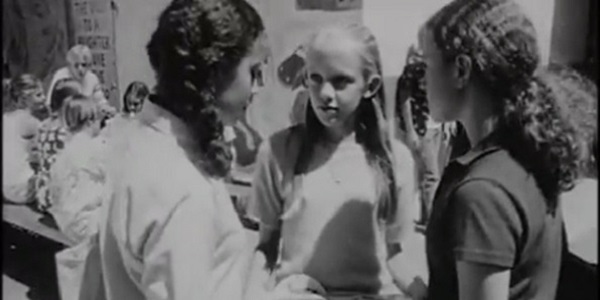
Coppola’s short film Lick The Star highlights a number of themes that have proved central to her work. The narrative, featuring a high school clique of girls who plot to weaken their male classmates with arsenic (taking inspiration from the novel Flowers in the Attic), demonstrates Sofia Coppola’s focus on the dynamics of power.
Chloe, the leader of the clique, showcases her power wantonly with little regard for others. Her power, and her command, is predominantly used to meaningless ends.
In addition to signalling the thematic nature Coppola’s work would follow, Lick the Star indicates Coppola’s now-recognisable aesthetic choices. Her use of music to reveal character detail has been used in all of her work, and her use of dream-like interludes to create atmosphere would be seen again.
The Virgin Suicides (1998)
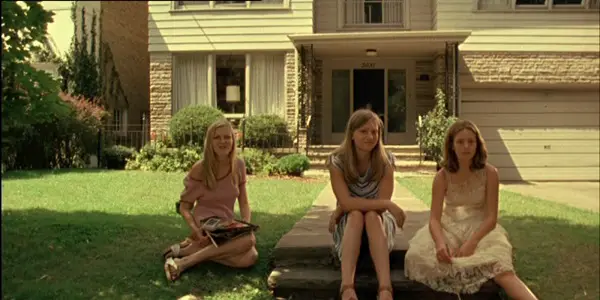
Marking Sofia Coppola’s only adapted screenplay, The Virgin Suicides depicts the Lisbon family: a family whose offspring has inspired the yearning of the narrative chorus of neighbourhood boys. The five pubescent Lisbon daughters, each similarly admired by the neighbourhood boys, take their own life during the course of the film. Their motivation is never made explicit, largely because their lives are coloured through the desires and interpretation of the teenage boys.
Again, Coppola focuses on themes of isolation and alienation here. The girls, admired from afar, are never truly seen as individuals, and struggle with their oppressive and austere mother. Their mother (Kathleen Turner) seems to fear their burgeoning sexuality, requesting that Lux (Kirsten Dunst), the most vivacious of the five, remain covered.
Marketing campaign aside, which includes a trailer that makes the film appear to be a dramatic thriller thanks to the dance soundtrack, the film is languid in its approach. Sofia Coppola’s direction will not be rushed, and her determination to control her pacing remains a constant throughout her work.
Soundtracked by Air, the film features a number of fantasy sequences that play with light and colour. The reaction to the film was largely positive, yet Coppola would not release a film for another four years.
Lost in Translation (2003)
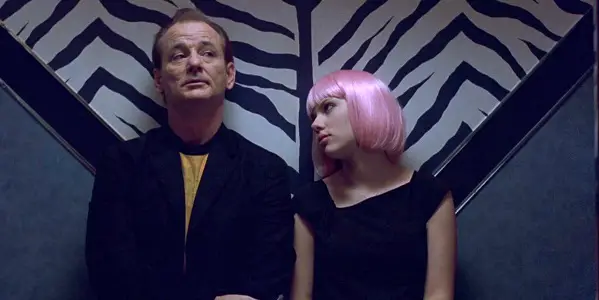
Signalling Sofia Coppola’s first foray into becoming the auteur she is considered to be today, Lost in Translation was her first independently penned feature. Coppola’s decision to base the film in Tokyo was fuelled by her own personal experience with the city. Having visited on numerous occasions, Coppola’s affection for the city is clear throughout.
Famously, Sofia Coppola pursued star Bill Murray for several months, having him firmly in mind for protagonist Bob, the ageing actor struggling to stabilise himself. Featuring a relationship that is simultaneously romantic and platonic, Lost in Translation stars Murray as the aforementioned Bob, and Scarlett Johansson as Charlotte, in what is arguably her break out role.
Bob, in Tokyo to shoot a commercial, meets Charlotte, newly married and newly graduated. Bob is nearing the end of his career, while Charlotte has yet to embark upon hers, struggling with her interests and desires as to what she wants to do.
Including a number of outdoor locations, and beautiful city vistas, Lost in Translation is arguably Coppola’s most popular film to date, garnering her the accolade of being the third female director to be nominated as best director at the Oscars. Again, as it almost always the case with Coppola’s work, it also attracted derision, with some citing a lack of any real narrative development.
Certainly there is little narrative development, but that is not what Lost in Translation is aiming to do, and thus should not be levelled as a criticism. Coppola aimed to feature character development and change, and Lost in Translation succeeds in doing so.
Marie Antoinette (2006)
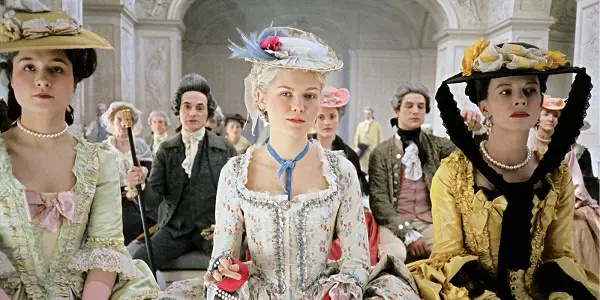
Coppola’s next film, Marie Antoinette, proved perhaps to be her most contentious. Depicting the life of the ill-fated Marie Antoinette, purists baulked at the casting of American actor Kirsten Dunst, as well as the pop-laden soundtrack.
Her focus on Marie Antoinette’s life, in which she is encouraged into a marriage that will prove fortuitous for her native Austria, attempts to create an empathetic approach, highlight her young age, as well as her naivety.
Sofia Coppola sought to humanise Marie, and in doing so, decided to feature pop culture that would make her character feel both relevant and relatable. Despite her place in history, the history is not the focus here. Instead, Marie Antoinette is an individual struggling with daily life, and as such demands our attention.
Coppola’s direction strays into the hyperreal at times, and her candy coloured mise-en-scène and hyperbolic staging both highlight the wealth and indulgence of the monarchy, as well as the childlike nature of Marie.
A reportedly negative reception at Cannes should be paid little heed. Marie Antoinette is a uniquely affecting period film, which thankfully, pays little attention to a traditional historical approach.
Somewhere (2010)
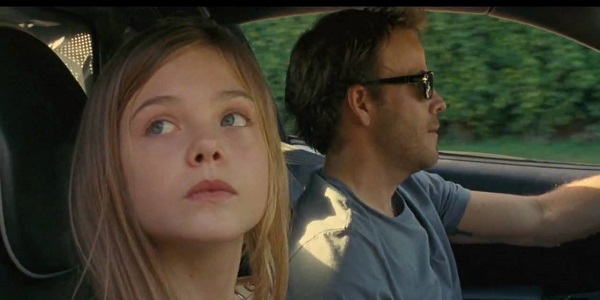
Coppola’s next film, Somewhere, departed from her usual female-centric narrative, and instead focused on Johnny Marco (Stephen Dorff), an actor whose fame has only recently been made apparent. Marco is compelled to spend time looking after his eleven-year-old daughter Cleo (Elle Fanning in an early role), and the narrative shows his increasing recognition that he is largely dissatisfied with his life in its current state.
For some, the film demonstrated little directorial growth for Sofia Coppola, and it was noted that the film featured similar themes to earlier works. While the film does indeed revisit similar themes, particularly focusing on the burden of being a celebrity, it would be reductive to compare the film to Coppola’s earlier work and simply find it lacking.
Johnny Marco is not Bob Harris, and Coppola is clear about that. Bob Harris is likeable and amenable, Johnny is not. His interactions with women do not endear him to the audience, and it is only through his relationship with his daughter than he can be redeemed.
Again, Coppola’s directorial style, featuring long-takes, long edits and a frequently static camera, is wonderfully engaging, allowing character performance to simply happen.
The Bling Ring (2013)

Returning once more to the sphere of celebrity, Sofia Coppola takes real-life inspiration for The Bling Ring, basing her screenplay on a Vanity Fair article by Nancy Jo Sales.
Interestingly, while previous films had featured celebrities themselves, The Bling Ring features young teens who desire to adopt the celebrity lifestyle themselves through raiding and stealing from their icons’ homes.
The film’s style is notably more knowing and satirical in its approach than Coppola’s previous efforts and, while its pacing and aesthetic is trademark Coppola, its tone marks a clear change. Previously Coppola has asked her viewers to observe and empathise, here, she wants them to simply observe.
For some, this lack of character insight has proved questionable but such a decision is notable. Revealing character motivation could have resulted in the film becoming overly saccharine. Refusing to truly analyse her character’s motivations enables Sofia Coppola to imbue the film with irony.
A Very Murray Christmas (2015)
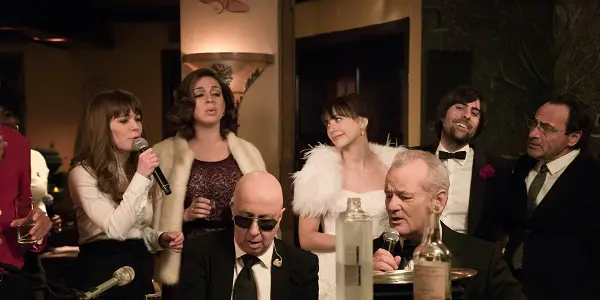
Produced for Netflix, A Very Murray Christmas, again indicated a departure in style and tone for Coppola. Paying homage to Christmas movies of the past, the film is largely a vehicle for star Bill Murray.
Murray stars as himself, as he attempts to partake in a live Christmas special, despite the weather causing havoc, and the ensemble cast’s (including Maya Rudolph, Amy Poehler and Rashida Jones) various entanglements detracting from the show.
A Very Murray Christmas, like The Bling Ring, highlights a clear development for Coppola. While her films have always been infused with humour, her most recent effort is perhaps her first openly comedic.
Critics of Sofia Coppola have often considered her to be too serious, too sombre in tone, yet A Very Murray Christmas shows that Coppola can direct comedy successfully.
What next?
Sofia Coppola had been slated to direct a live-action remake of The Little Mermaid, but dropped out over creative differences. It has since been announced that her next project will be a remake of the 1971 film The Beguiled. The film will see Coppola reuniting with Kirsten Dunst and Elle Fanning, as well as working with Nicole Kidman for the first time.
While Coppola has directed period pieces before, it will be interesting to see her approach in directing a western, particularly given the very specific iconography. Will Coppola continue to develop her approach in terms of tone, or will the tone of the film be more reminiscent of her earlier work?
Are you a Sofia Coppola fan? Which is your favourite Coppola film?
Does content like this matter to you?
Become a Member and support film journalism. Unlock access to all of Film Inquiry`s great articles. Join a community of like-minded readers who are passionate about cinema - get access to our private members Network, give back to independent filmmakers, and more.
Siobhan is a teacher and writer living in Wales, UK. She holds a BA in English and an MA in Film and Television Studies. She is especially interested in depictions of female desire, transitions from youth to adulthood and performative gender. She tweets at @siobhan_denton and writes at https://theblueandthedim.wordpress.com/













